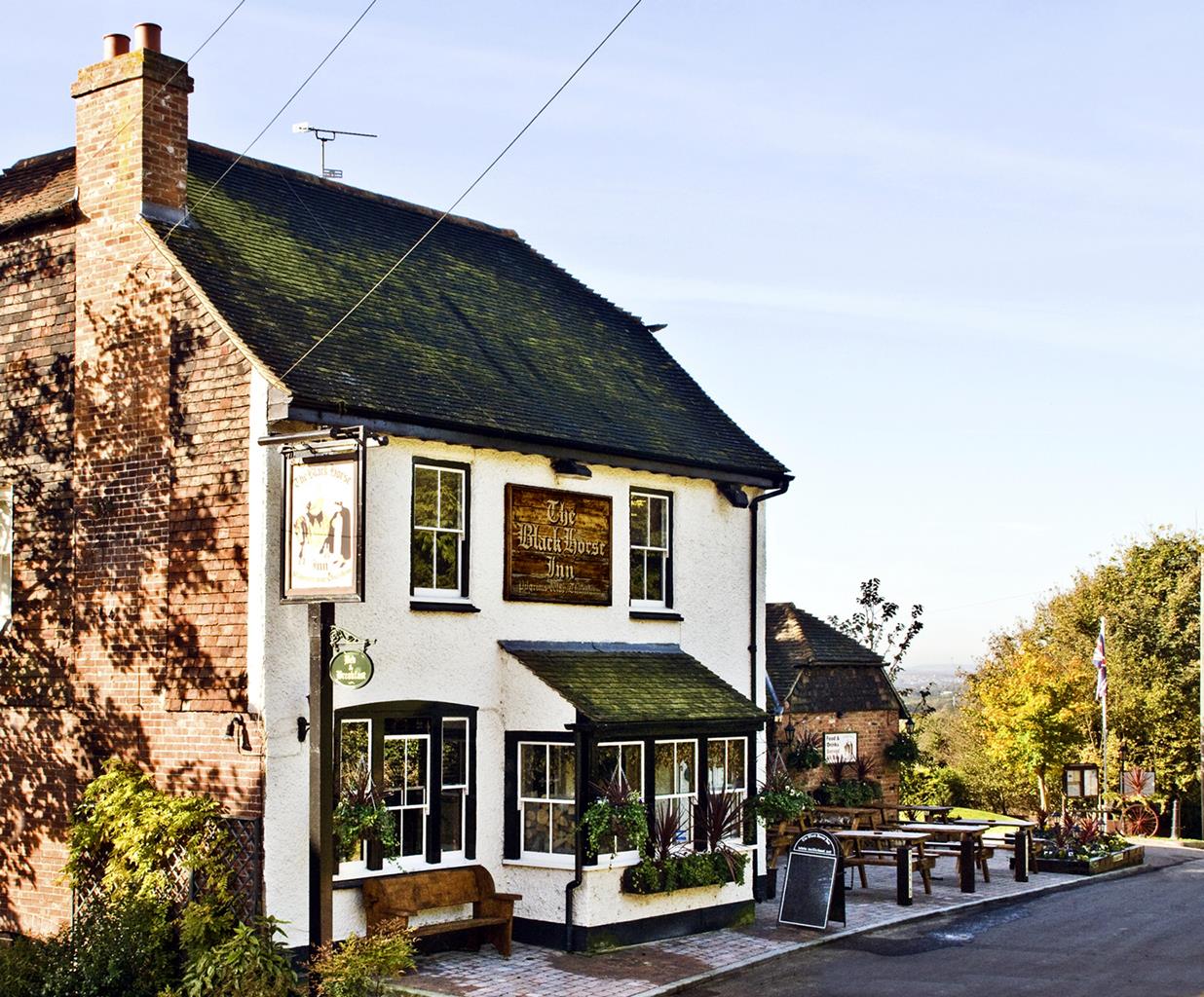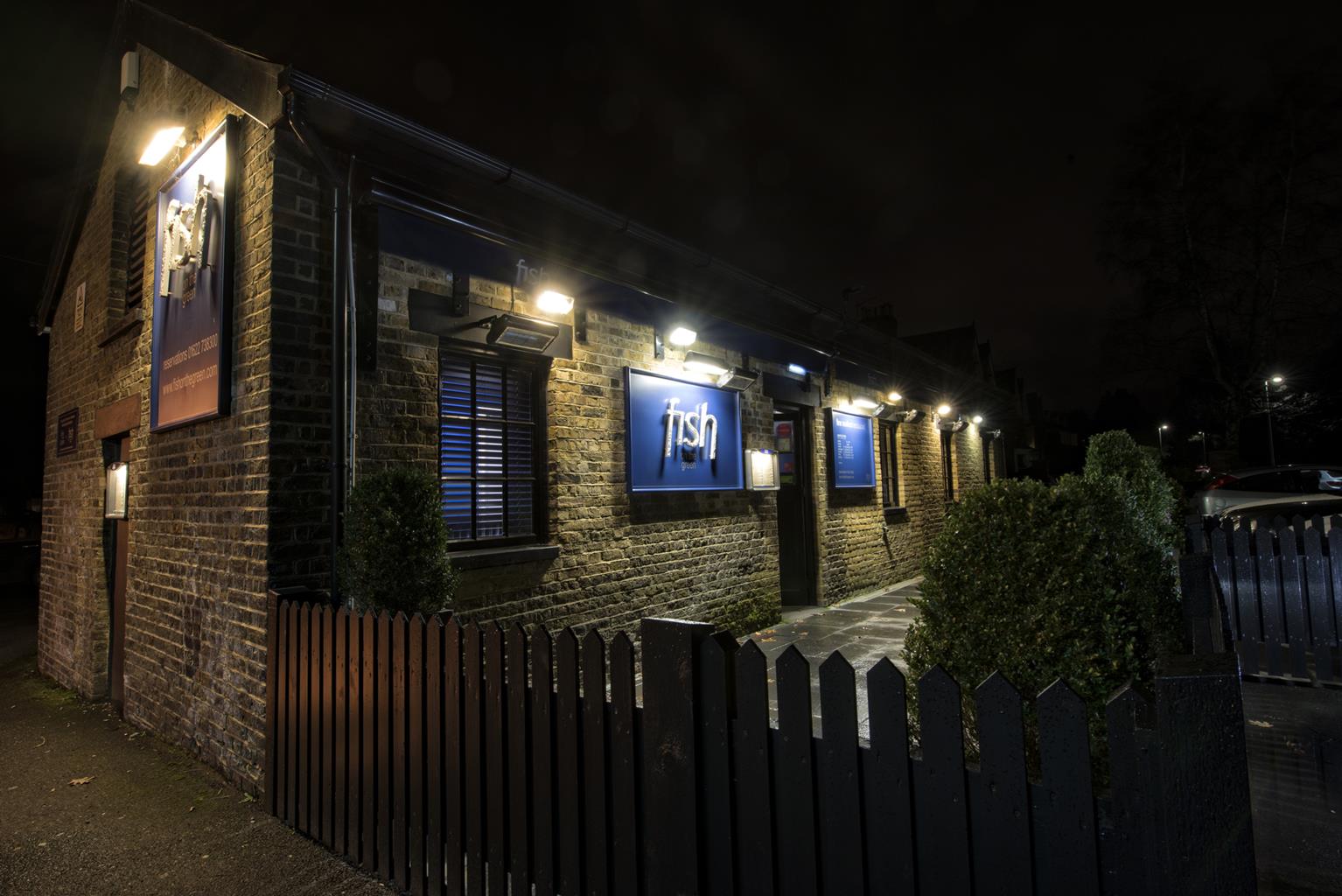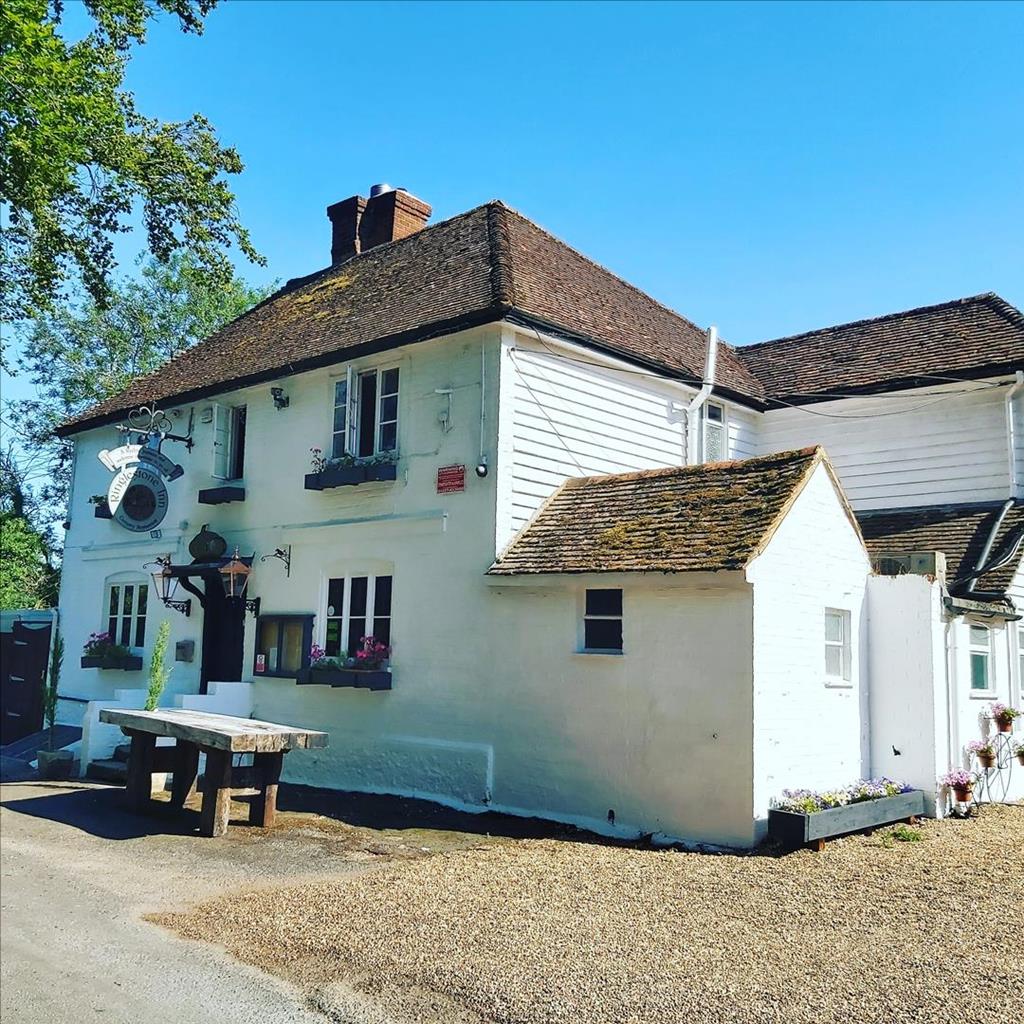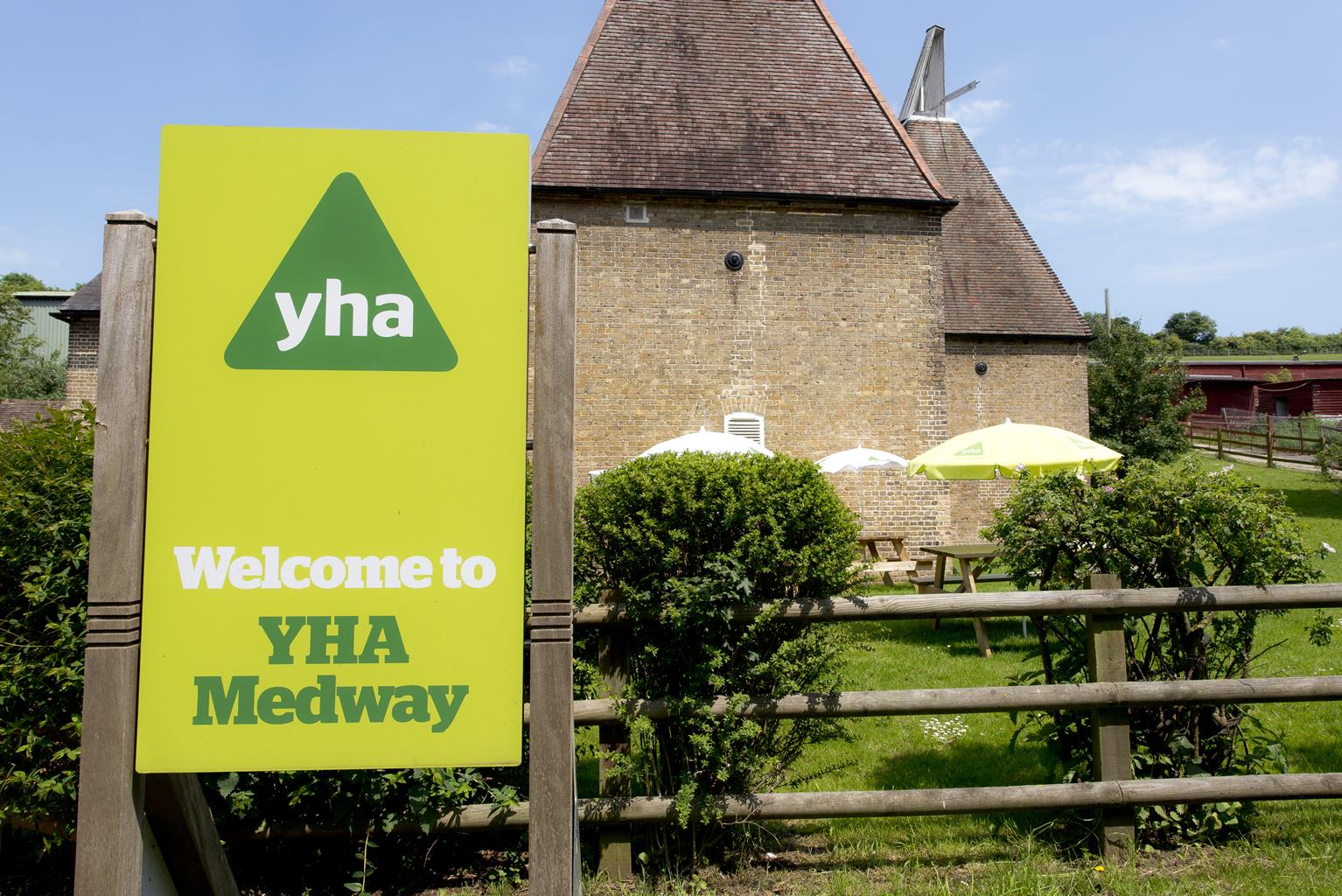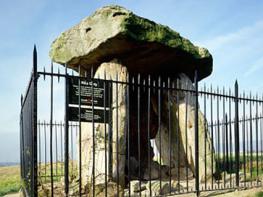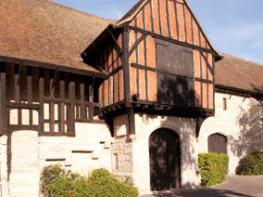Established in a lush paddock opposite the owners' house, Kits Coty Glamping is located in…
Ancient sites of Aylesford

6 miles (9.7kms)
About the walk
You will never be alone on this walk, no matter what time of year you do it. Everywhere you go, you will be surrounded by the spirits of the past. For although it is entwined in busy roads and peppered with warehouses and factories, Aylesford is not the modern place it appears to be; in fact it is one of the oldest continuously occupied sites in England.
Thousands of years ago, neolithic people moved here. The North Downs offered safety, as well as a plentiful supply of flint for tools, and the river could be easily forded at low tide. Aylesford was settled by the Romans and was the site of an important battle in which the Jutes, Hengist and Horsa, defeated native Britons in AD 455. Alfred defeated the Danes here in AD 893 and Normans built the village church.
Neolithic people were surprisingly sophisticated. Not only did they use tools, but they also farmed and herded animals. They created trackways, such as the route we call the Pilgrims' Way, and traded with one another, not just within Britain but overseas too. Neolithic people also had religious beliefs and they built elaborate tombs, probably for the most important members of their community. You pass one of these tombs on this walk, built, as was the tradition then, on high ground. It is known as Kit's Coty House, the name meaning the house ('coty') of Kit, or Catigern, an Iron Age leader who was once thought to have been buried there. However, this site is far older than that. Often called Kent's Stonehenge, it dates back 5,000 years and consists of three enormous upright stones with another huge stone resting on top. It's almost impossible to imagine just how they got the stones up here, let alone into place. This stone portal would once have been buried under a mound of earth and was a communal burial site, probably for religious leaders.
Close by is Little Kit's Coty House, the remains of another Neolithic burial chamber that is possibly even older than Kit's Coty House. All you can see now are a mass of half buried stones. They are sometimes called the Countless Stones, because each time you count them you are said to arrive at a different number.
Walk directions
From the entrance to The Friars turn right towards the village, cross the road and soon join a raised pathway. Walk up steps on your left, go round by the graveyard, then follow the path to a tarmac road. Go left here, then left again along the path close to a junction.
At the marker post fork left and walk around the field until you come to some scrub. Walk through this to a gate and follow the fenced path ahead to a gate and a patch of woodland. Keep this on your right and continue ahead, ignoring any paths on the right. Eventually the path passes a vineyard and bends left into Eccles.
Turn left along a residential street then take the public footpath opposite No 48. Enter a field and take the left-hand path along the field-edge. At the end of the hedge bear diagonally left to cross a stile in the hedge and another to the left of the pylon head. Now keep ahead across fields, going over four more stiles to reach a junction of roads.
Turn left on to the Pilgrim's Way ahead – here there is a very unmedieval main road – and then right after some cottages to follow the waymarked bridleway. Follow the track as it winds up to Blue Bell Hill, where there is a final steep ascent to a tarmac path. Turn right along the North Downs Way. (Do take a detour left to enjoy the eye catching views from Blue Bell Hill car park.)
Keep following the North Downs Way until you join a road. Walk to the main A229, keep right along a side road and don't cross the bridge. Continue and go left with the North Downs Way sign, descending steeply through trees to Kit's Coty House, an incongruous site in this busy landscape. Walk down to a busy road junction, turn left and join the Pilgrim's Way across the road, on the corner by the M20 sign. (Little Kit's Coty House is on the main road further down to the right.)
Follow the path, then take the first track you come to on the right. This brings you to a road which you follow ahead. Opposite Little Cossington Farm, go through a gate on the right and walk diagonally across the field. Cross a stile and bear right towards a patch of woodland. Continue along a short fenced path and cross the field ahead to pass through the hedge into another field. Continue to a gate close to the bottom right-hand corner, go through the kissing gate ahead and turn right along the road. Turn left at the junction, then right along the High Street to return to the start.
Additional information
Field paths and ancient trackways, some road, several stiles
Mix of ancient and industrial landscapes, superb viewpoint
Very few off lead sections plus proximity to very busy roads means this is not very dog friendly
OS Explorer 148 Maidstone & the Medway Towns
The Friars, Aylesford (donation)
The Friars and village centre
WALKING IN SAFETY
Read our tips to look after yourself and the environment when following this walk.
Find out more
Also in the area
About the area
Discover Kent
The White Cliffs of Dover are an English icon – the epitome of our island heritage and sense of nationhood. They also mark the point where the Kent Downs AONB, that great arc of chalk downland stretching from the Surrey Hills and sometimes known as ‘the Garden of England’, finally reaches the sea. This is a well-ordered and settled landscape, where chalk and greensand escarpments look down into the wooded Weald to the south.
Many historic parklands, including Knole Park and Sir Winston Churchill’s red-brick former home at Chartwell, are also worth visiting. Attractive settlements such as Charing, site of Archbishop Cranmer’s Tudor palace, and Chilham, with its magnificent half-timbered buildings and 17th-century castle built on a Norman site, can be found on the Pilgrim’s Way, the traditional route for Canterbury-bound pilgrims in the Middle Ages.
In the nature reserves, such as the traditionally coppiced woodlands of Denge Wood and Earley Wood, and the ancient fine chalk woodland of Yockletts Bank high on the North Downs near Ashford, it is still possible to experience the atmosphere of wilderness that must have been felt by the earliest travellers along this ancient ridgeway.
Nearby stays
Restaurants and Pubs
Nearby experiences
Recommended things to do
Why choose Rated Trips?
Your trusted guide to rated places across the UK
The best coverage
Discover more than 15,000 professionally rated places to stay, eat and visit from across the UK and Ireland.
Quality assured
Choose a place to stay safe in the knowledge that it has been expertly assessed by trained assessors.
Plan your next trip
Search by location or the type of place you're visiting to find your next ideal holiday experience.
Travel inspiration
Read our articles, city guides and recommended things to do for inspiration. We're here to help you explore the UK.


